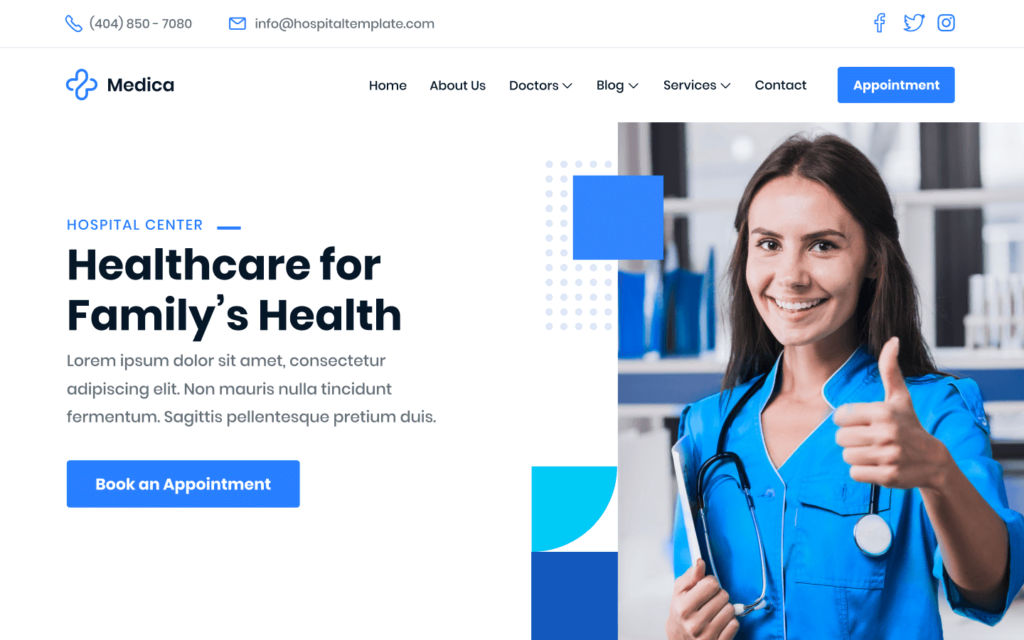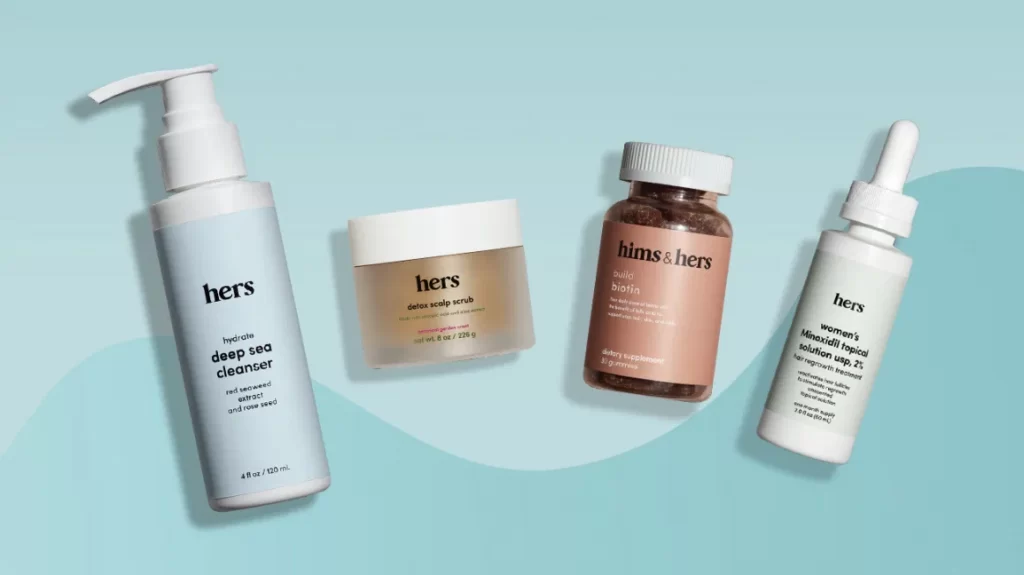The Cutting Edge of Healthcare Marketing Trends and Tactics
Hey there! In our fast-paced world, healthcare marketing constantly evolves to keep up with emerging tech, new patient expectations, and industry shifts.
2024 is a pivotal year for healthcare marketers looking to connect with tech-savvy, wellness-focused patients. From personalisation to telehealth, this year's trends are creating outstanding patient experiences through innovative, human-centric strategies.
Ready to dive in? Let's explore the top healthcare marketing trends taking the industry by storm in 2024!
Table of Contents
The Whole Patient Experience Matters Most

Gone are the days when medical marketing was all about pushing out dry, generic ads and brochures. In 2024, healthcare marketers who want to thrive focus on the complete patient experience from start to finish, navigating the complexities of even the hardest medical specialities.
Imagine this: A woman goes online to research fertility treatments. With a few swipes, she can easily access info on different options, book appointments, meet the staff through video bios, connect with current patients on a forum, and get a cost estimate personalised to her insurance and situation. From pre-visit to post-procedure follow-up, her experience is convenient, transparent, and centred totally on her wants and needs as an individual.
That's what today's patient experience is all about – catering to patients as whole people, not just numbers. To deliver that exceptional journey, top healthcare organisations are using tools and tactics like:
- Persona research and journey mapping to understand their audiences deeply
- Seamless omnichannel experiences accessible on any device
- Simple, intuitive digital platforms and streamlined appointment booking
- Video content introducing staff and explaining procedures
- An empathetic, human tone in all marketing messaging
- Consistent, quality follow-up care to build loyalty
- Patient communities and opportunities for genuine connection
Savvy healthcare marketers are transforming the patient experience from fee-for-service to human-centric, value-based care by aligning every touchpoint and using an authentic, helpful voice. They've realised that prioritising the whole person – not just promoting clinical services – is critical to thriving in 2024's patient-driven market.
Embracing an Optimised Omnichannel Approach
Healthcare teams used to treat different channels in total isolation. But in our mobile-first world, patients expect a cohesive, channel-agnostic experience everywhere they interact with a provider.
Do you have a question about your prescription refill? You want to get info via SMS, reply on social media, or call a helpline and get the same seamless, personalised service. Looking for anxiety help? You might start by googling therapists, scheduling a telehealth appointment on your phone and following up with some self-help content your provider's app recommends.
There's no separate “digital” and “physical” marketing anymore. The savviest healthcare marketers recognise and optimise their content, messaging, and processes across every channel so patients can access what they need 24/7 with zero friction.
Here are some omnichannel best practices leading healthcare brands are leveraging:
- Cohesive branding and tone to create a unified identity across all platforms
- Integrated technology and databases to enable personalised experiences
- Self-serve options via online portals, apps, and AI-powered chatbots
- Click-to-call and click-to-schedule capabilities to facilitate quick action
- SMS appointment reminders, test result notifications, and care follow-ups
- Retargeting campaigns that serve relevant ads across search, social, and display
- Omnichannel analytics for insights into the cross-channel customer journey
By using channels intelligently and centring convenience, today's healthcare marketers are meeting patients on their turf to deliver a smooth, harmonious brand experience no matter where or how they engage.
Taking Personalisation to the Next Level

Today's healthcare consumers want – and expect – tailored experiences. Gone are the days of one-size-fits-all marketing, where hospitals blast out the same generic email or social post to all their patients.
In 2024, effective healthcare marketing is all about making people feel special and seen. It means using rich data insights and cutting-edge tech to create personalised content, services, and interactions attuned to each patient's unique profile.
Leveraging Data to Power Relevance
Innovative healthcare brands are leveraging the power of data at every stage of the patient's journey. They're mining EHRs, CRMs, and other sources to gain a 360-degree view of each person's history, preferences, risks, likely barriers, and motivational drivers.
Rather than lumping all cardiac patients together, for example, hospitals can serve customised content based on segments like high risk vs recovering vs caregiving status. Or they might target Medicare patients with a specific chronic condition using personalised messaging highlighting helpful services like nutrition counselling or transportation assistance.
Using Tech to Humanise Interactions
But personalisation isn't just putting names in subject lines. Cutting-edge digital tools and AI enable care teams to deliver more human, empathetic, and relevant interactions:
- Chatbots can use natural language processing to provide tailored responses and facilitate self-serve scheduling, FAQs, and triage
- AI recommendation engines surface customised content like wellness tips, video tutorials, or educational material based on a person's history.
- Digital assistants plan and guide a patient's journey by sending timely reminders, directions, and updates unique to their experience.
- Dynamic websites customise everything from wayfinding to support resources and health tracking based on a patient's situation.
Healthcare organisations can build deeper connections, trust, and loyalty with their digitally-savvy audiences by making marketing feel like one human talking directly to another.
Promoting Telehealth for a Modern Healthcare Experience
Telehealth is no longer just a pandemic stopgap but an essential part of the modern healthcare experience. Patients have grown accustomed to the convenience of seeing their doctor over a video call and expect providers to offer robust virtual options.
As a result, telehealth is becoming a key focus for healthcare marketers in 2024 and beyond. Providers are investing in technologies like:
- HIPAA-compliant telehealth platforms with capabilities like screen sharing, digital whiteboards, and medical device integration
- Mobile apps for on-the-go consultations, symptom tracking, and health record access
- Video call scheduling and triage solutions that fit seamlessly into providers' existing workflows
- Interfaces optimised for user experience, with integrations for EHRs, billing, and other core systems
But tech is just one part of successful telehealth marketing. Top organisations are also employing tactics like:
- Educational content explaining virtual care options and highlighting convenience and safety benefits
- Social media promotion showcasing real telehealth patient stories and cross-promoting digital health channels
- Featuring virtual visit booking flows and clear CTAs on websites, search listings, and other marketing assets
- Rebranding and creative campaigns to build awareness and reputation around telehealth services
- Staff training on bedside manner for video consults to maintain a personal, high-quality experience
By promoting and properly operationalising virtual health options, healthcare marketers give busy, mobile-first patients the on-demand access and excellent care they expect.
Prioritising Purposeful Content Marketing

Today's patients turn to Google before their doctor for much of their health research and education. At the same time, widespread health misinformation continues to generate confusion and frustrate efforts to improve public well-being.
These realities have made high-quality content marketing an indispensable tool for healthcare providers to attract and retain patients, build authority and reputation, and promote healthy behaviours.
Instead of disruptive advertisements, a growing number of healthcare brands are focusing on creating purposeful, information-rich content like:
- Blog posts and articles explaining conditions, treatments, nutrition, preventative care and more
- Interactive tools like symptom checkers, BMI calculators, and other patient self-serve resources
- Long-form educational content like ebooks, white papers, and digital health guides
- Visually compelling infographics, animations, and video content for social media
- Condition-specific content hubs, patient communities, and support groups
- Podcasts and live streams provide easy access to expert health information
The Content Marketing Strategy Playbook
Healthcare marketing teams that excel at content strategy follow some reliable best practices:
- Using SEO research, analytics, and voice search to understand patient searches and content needs
- Aligning content to answer common health questions at every stage of the patient journey
- Creating a library of “pillar” content that can be easily repurposed across channels
- Collaborating with clinicians and medical subject matter experts for authority and trust
- Optimising content for discoverability through technical SEO and schema markup
- Maintaining an active, interactive social media presence to drive engagement
- Implementing closed-loop reporting to tie content back to tangible business goals
When done well, content marketing shows up helpfully with the correct information at the right time to build patient confidence, education, and loyalty to a particular healthcare provider.
Standing Out from the Crowd with Bold Creative

With countless digital health options at patients' fingertips, healthcare marketers face the challenge of grabbing attention amid the noise more than ever.
In 2024, creative teams must improve their branding and innovative game to deliver messaging and visuals that truly stand out. The ones executing best use:
- Bold, vibrant colours, fonts, and imagery create an unmistakable visual identity
- A distinctive, human brand voice that feels relatable and conversational
- Punchy copywriting, minimal text, and captivating headlines to get key points across fast
- Meme-style social content that leans into internet culture to feel relevant and native
- Influencer partnerships and social UGC to borrow credibility from real people
- Animation, video storytelling, and music/sound design to engage audiences holistically
Branding for Trust and Connection
Creative teams also recognise that healthcare is an inherently emotional space. So, in addition to demand generation, they're focusing branding on building trust, connection, and emotional resonance.
Consumers want to feel that a healthcare provider understands and cares about them as individuals. Some of the most potent creatives do this by:
- Featuring genuine patient/employee stories and faces to humanise the brand
- Showcasing staff expertise and highlighting years of experience and credentials
- Leaning into empathy and validating common patient fears, frustrations, and aspirations
- Striking an optimistic, upbeat tone in aesthetics, messaging, and story framing
- Localising visuals and campaigns to reflect relevant culture, language, and communities
Clarity around procedures, costs, and what to expect is also huge. So designs, motion graphics, AR, and other visuals increasingly focus on communicating logistics simply and transparently.
The most successful branding helps patients picture themselves having a calming, affirming experience with a provider they can relate to and trust on a human level.
Quick Hits – Other Healthcare Marketing Trends
Beyond the significant trends covered above, here are a few other white-hot strategies and channels that savvy healthcare marketers are leveraging in 2024:
- Hyper-local community marketing to build presence and connectedness on neighborhood levels
- Micro-influencer partnerships with niche social creators relatable to specific audiences
- Cause marketing campaigns to activate key audiences around health and social issues
- Measure marketing ROI more concretely by tracking KPIs like appointments scheduled, revenue impact, etc.
- Getting scrappy with experimental channels like voice search, AR/VR tech, interactive in-office digital experiences
Conclusion
There you have it! As we head further into 2024, these trends and best practices shape the future of healthcare marketing – a future centred on outstanding patient experiences, omnichannel convenience, personalised human connections, and the thoughtful use of technology to deliver what people truly need to live healthier lives.
By taking inspiration from the cutting-edge healthcare marketers highlighted in this overview, your organisation can future-proof its brand relevance, patient loyalty, and revenue growth in today's competitive landscape.
But why stop here? Keep exploring, iterating, and innovating to stay in tune with patients' evolving needs and lifestyles. Healthcare marketing is an ever-evolving journey, and the teams who adapt their strategies with insight and empathy will ultimately thrive!
FAQs
What's the most significant trend influencing healthcare marketing in 2024?
Overall, patient experience has emerged as the top priority for healthcare marketers in 2024 and beyond. Instead of transactional, service-based messaging, leading organisations use digital channels and touchpoints to deliver cohesive, human-centred experiences built around patient preferences and needs. They're leveraging deep audience insights, optimised omnichannel strategies, purposeful content marketing, bold branding, and innovations like telehealth to satisfy patients' desires for empowering, accessible, on-demand health experiences.
How can I personalise healthcare marketing to patients?
The smartest healthcare marketers use data and advanced technologies to deliver 1:1 personalised interactions. Use your CRM, EMR, and other data to build detailed patient profiles and segments. Then, use tools like dynamic web content, AI-powered chatbots, digital assistants, and trigger-based automated campaigns to ensure each individual sees relevant information, support resources, promotions, and content based on their specific health status, motivations, and preferences. Focus on creating a human experience using a warm, personal tone, natural language, and formats tailored to individual communication styles.
What new channels should I consider for healthcare marketing?
On top of traditional channels like search and social, healthcare marketers are experimenting with emerging platforms like voice assistants, augmented/virtual reality, and interactive in-office digital signage to find new ways to engage audiences. Influencer marketing with relatable micro-influencers is another channel picking up steam in healthcare. The most innovative providers tap into hyper-local marketing, from targeted radio and OTT ads to community sponsorships and partnerships. Continuously test new channels to find creative paths to reach patients daily.
How can content marketing support healthcare business goals?
Top healthcare marketers use strategic content to drive business objectives around brand awareness, patient acquisition, loyalty, and revenue growth directly. Start by aligning all your content to the patient journey, from awareness-level educational content to sales-oriented landing pages and decision enablement tools. Optimise blog posts and videos for an organic search to drive qualified patient traffic. Use gated assets like health guides and downloadable tools to capture leads. Incorporate CTA's and tracking links strategically and nurture with automated campaigns to convert visitors to booked appointments. Measure content performance rigorously against engagement, conversion, and revenue metrics.
What healthcare branding best practices should I follow?
Authentic and human-centred branding is essential in 2024's healthcare landscape. Build an identifiable visual identity using bold, vibrant colours, fonts, and imagery. Develop an evident brand personality and voice across copy, design, and music. Make sure branding prominently features real people, employees, and patients to forge an emotional connection. Localise campaigns and creativity to reflect the specific cultures and communities in which you operate. Above all, focus branding on building expertise, credibility, empathy, positivity, and trust to stand out from competitors. Healthcare is an inherently emotional space for patients, so lean into that through branding that resonates personally.
